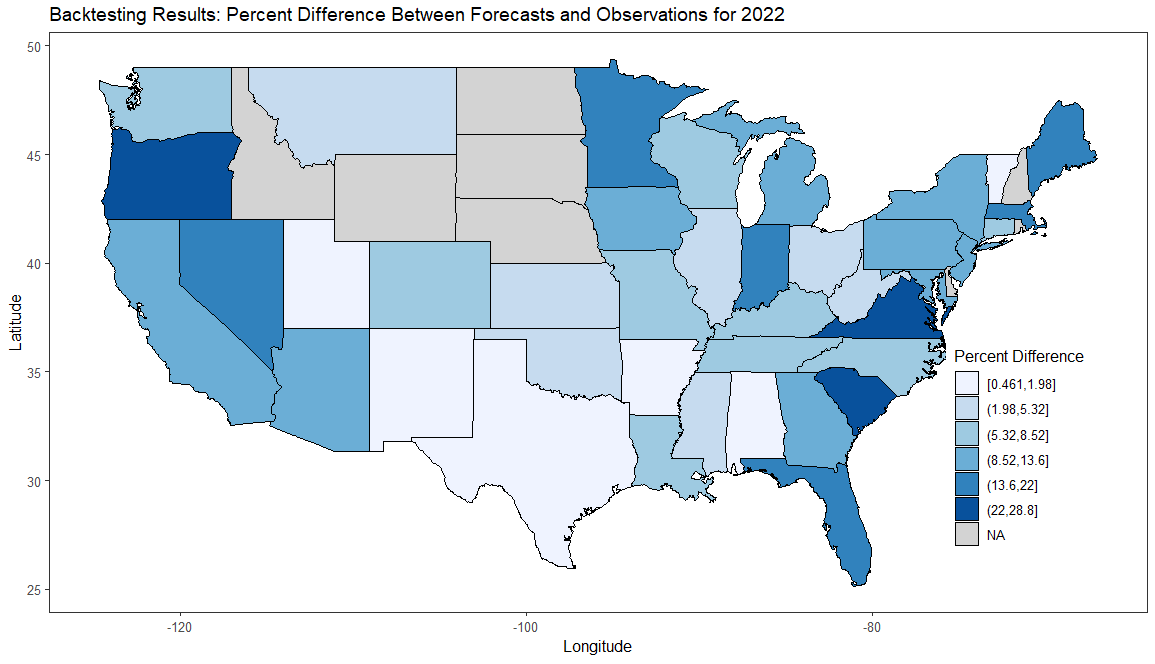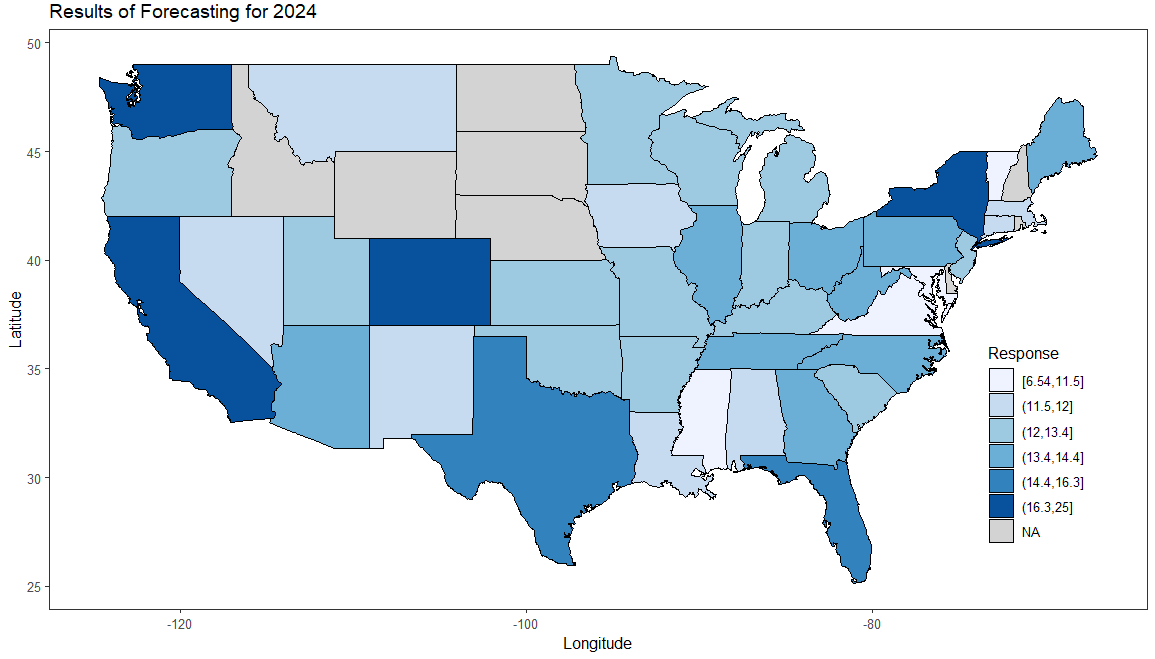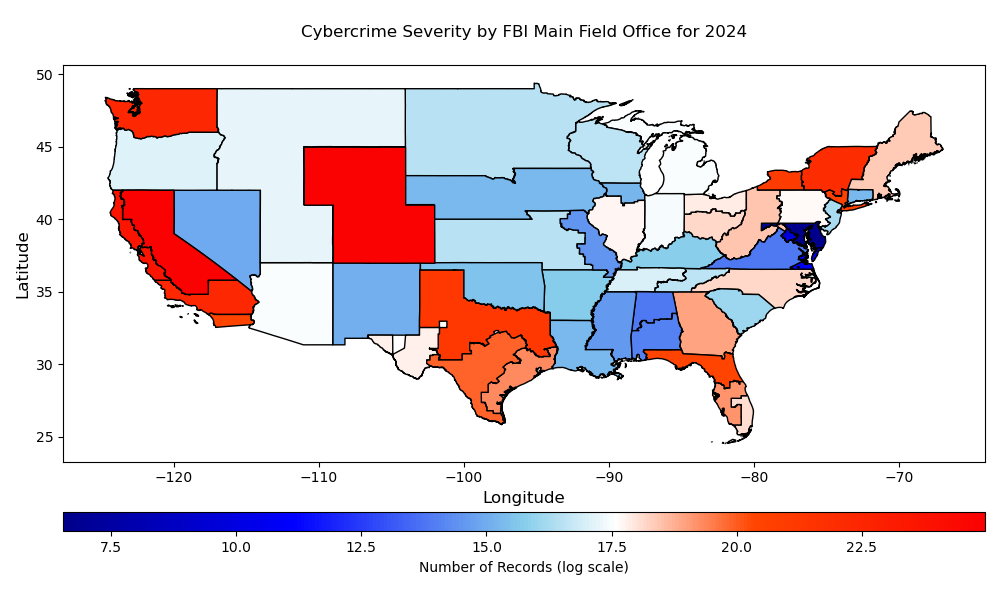Backtesting
Backtesting results for each state as the percent difference between the observed and forecasted data for 2022.
Funder: DHS Center of Excellence in Criminal Investigation and Network Analysis
Study Period: January 2024 - June 2024
Spatio-temporal Regression: We leveraged a geographically and temporally weighted regression (GTWR) approach to statistically study the various determinants influencing the evolving spatio-temporal scales of cybercrime across the United States.
Cybercrime data comes from the Privacy Rights Clearinghouse (PRC).
The data collected comes from the U.S. Bureau of Economic Analysis (BEA) and the American Community Survey (ACS) from the U.S. Census Bureau.
This study considers a technological variable as the percentage of households with internet acces.

Backtesting results for each state as the percent difference between the observed and forecasted data for 2022.

The forecasted number of compromised records as the severity of cybercrime for each state in the year 2024.

Forecasted number of records compromised for each FBI main field office for year 2024.

The minimum and maximum bands of the number of records compromised for each FBI agent in corresponding FBI main field offices in 2024. The blue dots represent the expected number of compromised records.